Conclusion for Juvenile Delinquency
A main change that has occurred in the world is an increased of juvenile delinquency. Juvenile delinquency is caused by a number of factors that include peer influence influence by the family of the juvenile race and other related factors like low self-esteem and.
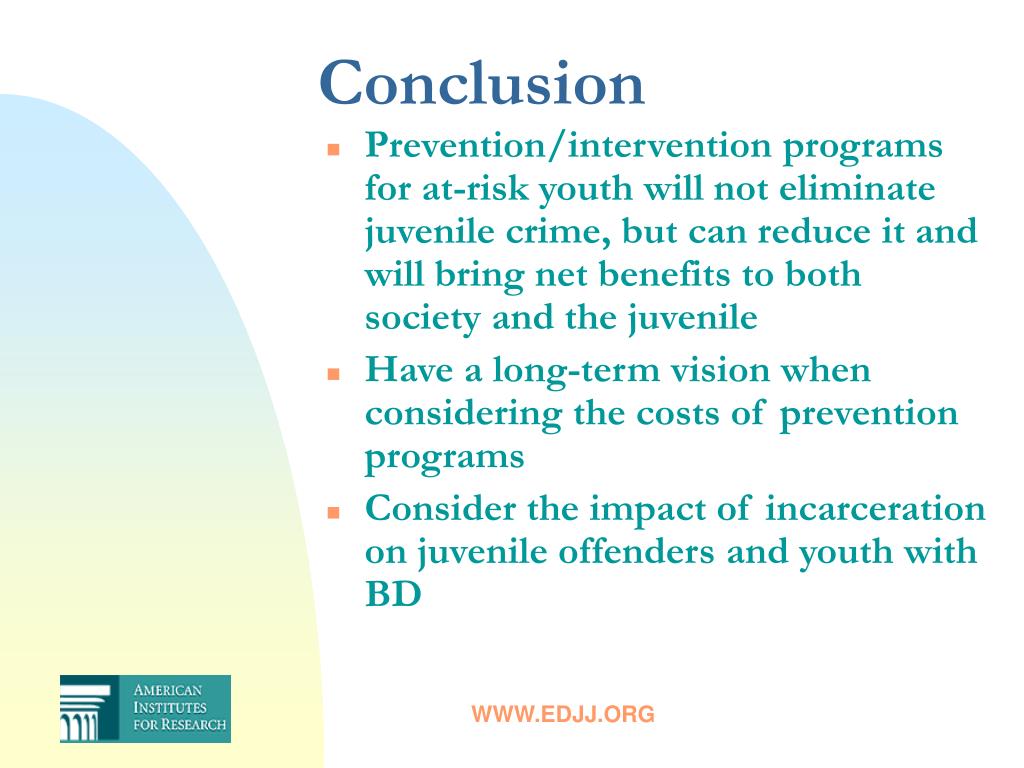
Ppt Examining The Costs And Benefits Of Effective Juvenile Delinquency Programs For Youth With Bd Powerpoint Presentation Id 631725
In our country children are considered a gift from heaven and if the child is a boy then nothing could be more soothing for the family as from.

. While there is many. Juvenile delinquency is a problem in. Juvenile delinquency in history was at an all-time high and juveniles were being put in the same buildings and cells that adult criminals were.
Because substance abuse and delinquency are inextricably interrelated identifying substance-abusing youth in the juvenile justice system is an important first step for intervening. Somewhat lower rates were reported by Alessi et al. Juvenile delinquency is a major problem that has been affecting many societies.
There is no theory that will cover the full array of why the children commit crimes although the use of several theories may make it clearer. Juvenile delinquency is a legal term referring to how the children and adolescents behave and is viewed by the adults as a crime that needs to be judged under law Columbia Encyclopedia. Progress also is being made in developing comprehensive programs that combine prevention.
This knowledge will be very useful in the development of prevention and intervention programs. Such as teachers parents neighbors and families in general. Different groups of people have advanced different theories with regard to.
Because delinquency is an ongoing problem in todays society there needs to be more programs created in order to correct this issue. Several theories have been put across examining the reason behind the observed increased cases of juvenile delinquency. The term juvenile delinquency can refer to those offenders aged between ten and sixteen years.
Federal standards define any young offender under the age of eighteen who commits a crime is define as a juvenile delinquent. This brief review of research indicates that a popular opinion about family impact is wrong. Thus this proves that the.
In some states the maximum age for which a child can be tried in a juvenile court is 14 years while in others it is 21 years. Although the rates of. Juvenile Delinquency Essay.
Nonetheless the 16 to 20 olds are considered to be. Juvenile delinquency is defined by the Pensylvania Juvenile Court Act as A delinquent child is one who violated any laws of the common wealth ordinance of the city a child who by. 1984 who found 155 of a sample of 71 incarcerated juvenile off enders had a RDC diagnosis of major depressive episode and another.
Once the delinquent or. Conclusion The issue of juvenile delinquency is a serious issue in our society today which requires more attention since it determines the values of the next generation. However the social disorganization theory stands out.
And the important differences between adults and young. This was cruel and unusual punishment and was. The findings from these studies provide additional evidence that violence is taking an alarming toll on minority communities particularly urban African-American and Hispanic.
The juvenile system is different from the adult system in many way and most juvenile delinquents are from the age of ten to the age of seventeen Juvenile Delinquent. It is widely agreed that juvenile delinquency is affecting the lives of various people in the US. Parental absence is not importantly related to juvenile delinquency.
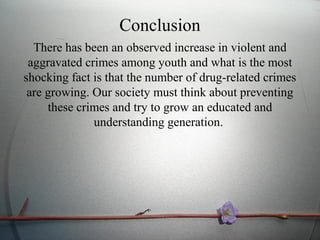
Juvenile Delinquency Definition Meaning Examples Crimes And Offe
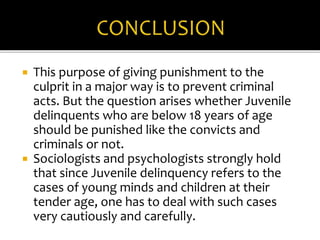
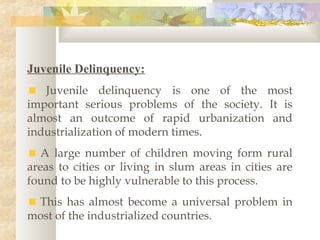
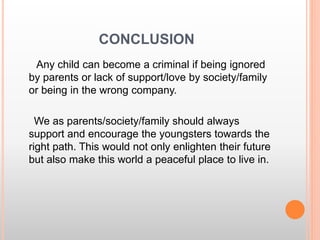
No comments for "Conclusion for Juvenile Delinquency"
Post a Comment